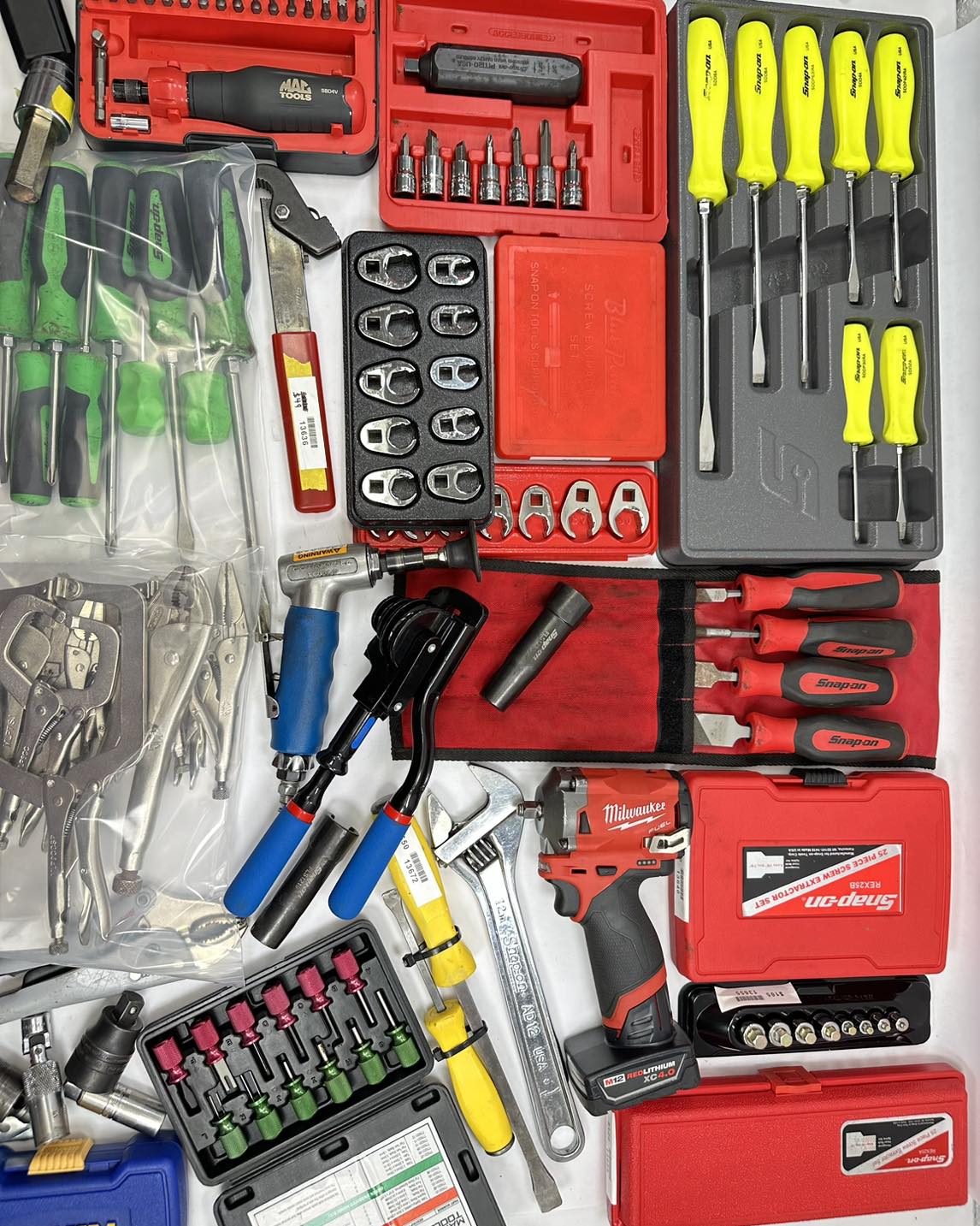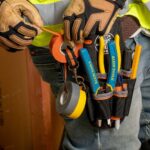What is a Tool Swapper?
A tool swapper is a platform or service that facilitates the sharing, renting, or trading of tools and equipment among individuals or organizations. It serves as a marketplace where people can access a wide range of tools without the need for outright ownership. The primary purpose of a tool swapper is to promote resource efficiency, reduce waste, and provide affordable access to tools for various projects or tasks.
The basic concept behind a tool swapper is simple: individuals or businesses with underutilized tools can list them on the platform, while others in need of specific tools can browse the available inventory and rent or borrow the desired items for a specified period. This sharing economy model allows people to access tools they might only require occasionally, eliminating the need for purchasing and storing them permanently.
Tool swappers can operate on a peer-to-peer basis, where individuals directly connect and arrange tool exchanges, or they can be managed by a central entity that oversees the entire process. Some tool swappers may also offer additional services, such as tool delivery, maintenance, and repair, to enhance the overall user experience.
Table of Contents
Benefits of Using a Tool Swapper
Cost Savings: One of the primary advantages of using a tool swapper is the significant cost savings it offers. Instead of purchasing expensive tools that may only be needed for a single project or infrequent use, individuals can access a wide range of tools through swapping programs for a fraction of the cost. This approach eliminates the need for substantial upfront investments and ongoing maintenance expenses.
Convenience: Tool swappers provide unparalleled convenience by allowing users to access the tools they need, when they need them, without the hassle of storage or transportation. Whether you’re tackling a home improvement project, working on a car repair, or pursuing a hobby, a tool swapper ensures that the right tools are available at your fingertips, eliminating the frustration of not having the necessary equipment on hand.
Access to Specialized Tools: Tool swappers often have an extensive inventory of specialized tools that may be too costly or impractical for individuals to own outright. From high-end power tools to niche equipment for specific trades, swapping programs give users access to a diverse range of tools that would otherwise be out of reach. This expands the possibilities for tackling more complex projects and exploring new hobbies or skills.
Environmental Impact: By promoting the shared use of tools, tool swappers contribute to a more sustainable and eco-friendly approach to resource utilization. Instead of each individual owning multiple tools that may sit idle for extended periods, swapping programs maximize the lifespan and utility of existing tools, reducing waste and the need for constant production of new equipment. This collective approach helps minimize the environmental impact associated with manufacturing and disposing of tools.
Types of Tool Swappers
Online Platforms
Online tool swapping platforms have gained popularity in recent years, allowing users to connect with others in their area or across the globe to exchange tools. These websites and apps typically function as a peer-to-peer marketplace, where individuals can list tools they own and are willing to lend or rent out, while others can browse and request to borrow the items they need. Some popular online tool swapping platforms include NeighborGoods, Peerrenters, and ShareShed.
Local Community Groups
In many neighborhoods and communities, tool swapping groups have emerged as a way for residents to share resources and reduce waste. These groups may operate through social media, email lists, or in-person meetings, facilitating the exchange of tools among members. Local tool swapping groups often rely on trust and a sense of community, with members lending tools to one another for free or for a nominal fee.
Tool Libraries
Tool libraries are physical spaces where members can borrow a wide range of tools, much like a traditional library but for tools instead of books. These libraries typically charge a membership fee and may have specific lending policies and procedures in place. Tool libraries can be found in many cities and towns, often run by non-profit organizations or community initiatives. They offer a sustainable and cost-effective way for individuals to access tools they may only need occasionally, without the need for ownership.
How Tool Swappers Work
Tool swappers, also known as tool libraries or tool lending programs, operate on a simple principle: members can borrow tools for a specific period, usually ranging from a few days to a few weeks, and return them when they’re done. The process typically involves the following steps:
- Membership: To access the tool swapper’s inventory, individuals need to become members. This often involves paying an annual or monthly fee, which helps cover the operational costs and tool maintenance expenses.
- Tool Selection: Members can browse the tool swapper’s catalog, either online or in person, to find the tools they need for their projects. The inventory typically includes a wide range of tools, from basic hand tools to specialized equipment for various tasks, such as gardening, woodworking, automotive repair, and home improvement.
- Tool Reservation: Once members have identified the desired tools, they can reserve them for a specific loan period. Some tool swappers operate on a first-come, first-served basis, while others may have a reservation system in place to ensure availability.
- Tool Pickup and Return: Members can pick up the reserved tools from the tool swapper’s location during operating hours. When the loan period ends, they must return the tools in good condition and on time to avoid late fees or penalties.
- Tool Maintenance: Tool swappers typically have a system in place to inspect and maintain the tools after each loan. This ensures that the tools are in proper working condition for the next borrower and helps extend their lifespan.
Membership fees for tool swappers can vary depending on the organization and the services offered. Some may charge a flat annual fee, while others may have different pricing tiers based on the frequency of tool usage or the types of tools borrowed.
Insurance policies are also an important consideration for tool swappers. Many organizations carry liability insurance to protect members in case of accidents or tool damage during the loan period. Members may be required to pay a small fee or deposit to cover potential repair or replacement costs if a tool is damaged or lost while in their possession.
Popular Tools for Swapping
For power tools, some of the most commonly swapped items include drills, saws, sanders, and other woodworking equipment. These tools can be expensive to purchase outright, making tool swapping an attractive option for DIYers and contractors working on smaller projects.
Gardening tools like rototillers, lawn mowers, hedge trimmers, and pruning shears are also popular choices for tool swapping. Many of these tools are only needed a few times per year, so it makes sense to borrow rather than buy.
When it comes to automotive tools, floor jacks, engine hoists, diagnostic scanners, and specialty wrenches and sockets are frequently swapped items. These allow home mechanics and hobbyists to tackle complex repairs without investing in an entire professional-grade tool set.
Outdoor equipment like camping gear, bikes, kayaks, and even larger items like RVs or boats can also be swapped through some services. This provides access to specialized adventure gear for occasional use without the hassle of storage and maintenance.
Finding a Tool Swapper Near You
One of the easiest ways to find a tool swapper in your area is to search online directories. Websites like ToolSwappers.com, ToolSharers.org, and NeighborGoods.net allow you to search for tool libraries and tool sharing groups by location. These directories often provide details on the types of tools available, membership requirements, and contact information.
Local community resources can also be a great source for finding tool swappers. Check with your neighborhood association, community center, or local hardware store to see if they have information on tool sharing initiatives in your area. Many cities and towns have started their own tool lending libraries or tool sharing programs, so inquiring with your local government can be helpful.
If you can’t find an existing tool swapper group near you, consider starting your own. Reach out to neighbors, friends, and community members who might be interested in sharing tools. Social media platforms like Nextdoor and Facebook can be useful for gauging interest and coordinating meetups. Start small by sharing basic tools like lawn mowers, power tools, and gardening equipment, and gradually expand your inventory as more people join.
Tips for Using a Tool Swapper
When using a tool swapping service, it’s essential to follow some basic guidelines to ensure a positive experience for everyone involved. Here are some tips to keep in mind:
Proper Tool Care: Treat borrowed tools with the same care and respect you would give your own tools. Clean them properly after use, and ensure they are in good working condition before returning them. Avoid misuse or abuse that could damage the tools.
Read Instructions: Before using a borrowed tool, thoroughly read the instructions and safety guidelines provided. Many tools require specific operating procedures or safety precautions, and it’s crucial to follow them to avoid injuries or damage.
Return on Time: Respect the agreed-upon return date and time for the borrowed tools. Other users may be waiting to use the same tools, and late returns can disrupt the entire system. If you need an extension, communicate with the tool swapper in advance.
Follow Etiquette: Tool swapping relies on trust and mutual respect among users. Be courteous and respectful when interacting with the tool swapper and other users. Communicate clearly, follow any established rules or guidelines, and leave the tools in the same or better condition than when you received them.
Legal and Insurance Considerations
When participating in a tool swapping arrangement, it’s crucial to consider the legal and insurance implications to protect yourself and others involved. One of the primary concerns is liability – who is responsible if someone gets injured or if property damage occurs while using a borrowed tool?
To mitigate risks, many tool swapping platforms require participants to sign waivers or agreements that outline the terms of use and clearly define liability. These documents typically state that the tool owner is not responsible for any injuries or damages resulting from the borrower’s use of the tool. However, tool owners may still be held liable if they knowingly lent out a defective or unsafe tool.
It’s also advisable for both parties to have appropriate insurance coverage. Tool owners should have homeowner’s or renter’s insurance that covers the tools they lend out, while borrowers may want to consider obtaining a temporary liability policy or checking if their existing homeowner’s or renter’s insurance covers borrowed items.
Additionally, tool swapping platforms often require participants to follow specific guidelines for tool maintenance, inspection, and proper usage. Failure to adhere to these guidelines could potentially void any liability waivers or insurance coverage.
Ultimately, it’s essential to thoroughly review and understand any legal agreements, waivers, and insurance policies before engaging in tool swapping. Consulting with a legal professional or insurance agent can provide valuable guidance and help ensure that all parties are adequately protected.
Tool Swapper Success Stories
The tool swapping movement has gained significant traction in recent years, with numerous communities embracing the concept of sharing tools and resources. Here are some inspiring success stories that showcase the positive impact of tool swapping initiatives:
The Seattle Tool Library: Launched in 2016, the Seattle Tool Library has become a shining example of a thriving tool sharing community. With over 3,000 active members, the library boasts an impressive collection of over 24,000 tools, ranging from basic hand tools to specialized equipment for various trades and hobbies. Members can borrow tools for a nominal fee, promoting resource sharing and reducing waste.
Toronto’s Institute for a Resource-Based Economy (IRBE): The IRBE is a non-profit organization that operates a tool library and repair café in Toronto. Their mission is to promote a circular economy and foster a culture of sharing and repairing. The IRBE has hosted numerous workshops and events, teaching individuals valuable skills in tool usage, repair, and maintenance, thereby empowering communities to be more self-sufficient.
The Baltimore Neighborhood Tool Bank: This grassroots initiative was born out of a desire to strengthen community bonds and provide access to tools for residents who may not have the means to purchase them. The Tool Bank operates on a membership model, allowing individuals to borrow tools for home improvement projects, gardening, and more. By promoting resource sharing, the Tool Bank has helped reduce waste and fostered a sense of community in Baltimore neighborhoods.
The Portland Repair Café: While not strictly a tool swapping initiative, the Portland Repair Café embodies the spirit of sharing knowledge and resources. Volunteers with expertise in various fields gather monthly to help community members repair broken items, from appliances to furniture and electronics. This initiative not only extends the lifespan of products but also teaches valuable repair skills, promoting a culture of sustainability and resource conservation.
These success stories highlight the transformative power of tool swapping and resource sharing initiatives. By fostering a sense of community, reducing waste, and promoting self-sufficiency, tool swapping has proven to be a viable and impactful solution for sustainable living.
The Future of Tool Swapping
The tool sharing economy is rapidly evolving, and the future of tool swapping holds both exciting opportunities and potential challenges. As sustainability and resource efficiency become increasingly important, the demand for tool sharing platforms is likely to surge. However, this growth will also bring new hurdles to overcome.
Trends:
- Expansion of Peer-to-Peer Platforms: Peer-to-peer tool sharing platforms, which connect tool owners with borrowers directly, are expected to gain more traction. These platforms leverage the power of technology and social networks, making it easier for individuals to monetize their underutilized tools and access a wider range of equipment.
- Integration with Smart Home Technologies: The Internet of Things (IoT) and smart home technologies will likely play a significant role in the future of tool swapping. Tools equipped with sensors and connectivity features could automatically report their availability, location, and condition, streamlining the sharing process.
- Increased Collaboration with Local Governments: As the benefits of tool sharing become more apparent, local governments may actively promote and support tool sharing initiatives. This could involve providing dedicated spaces, subsidies, or incentives to encourage community participation.
Challenges:
- Trust and Security Concerns: Building trust between tool owners and borrowers is crucial for the success of tool sharing platforms. Addressing concerns related to misuse, damage, or theft of tools will be an ongoing challenge as the industry grows.
- Regulatory Compliance: As the tool sharing economy expands, it may face increased scrutiny from regulatory bodies. Navigating legal and insurance requirements, particularly for commercial tool sharing, could pose challenges for platform operators and participants.
- Maintaining Quality and Reliability: Ensuring that shared tools are well-maintained, safe, and reliable is essential. Developing robust quality control measures and establishing clear responsibilities for tool maintenance will be a critical aspect of successful tool sharing platforms.
Opportunities:
- Sustainability and Environmental Impact: Tool sharing has the potential to significantly reduce the environmental footprint associated with tool production, distribution, and disposal. By maximizing the utilization of existing tools, the tool sharing economy can contribute to a more sustainable and circular economy.
- Community Building: Tool sharing platforms can foster a sense of community by bringing people together around shared interests and resources. This can lead to increased social cohesion, knowledge sharing, and collaborative problem-solving.
- Democratizing Access to Tools: Tool sharing provides an opportunity to democratize access to tools, particularly for individuals or organizations with limited financial resources. This can empower DIY enthusiasts, small businesses, and community projects, fostering innovation and self-reliance.
As the tool sharing economy continues to evolve, it will be crucial for stakeholders, including platform operators, tool owners, borrowers, and regulatory bodies, to collaborate and address emerging challenges proactively. By embracing innovation and fostering a culture of trust and responsibility, the future of tool swapping holds immense potential for promoting sustainability, community building, and equitable access to resources.



